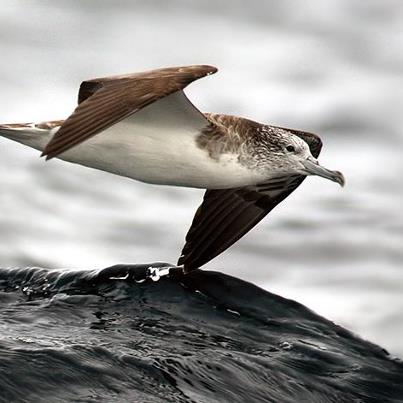
Streaked Shearwater at sea
Shiho Koyama (Graduate School of Environmental Studies, Nagoya University, Japan) and colleagues have published in the journal of Comparative Biochemistry and Physiology Part A: Molecular & Integrative Physiology on foraging stress in Streaked Shearwaters Calonectris leucomelas rearing chicks
The paper’s abstract follows:
“To understand foraging strategies and behavioral flexibility in wild animals, it is important to evaluate the physiological costs imposed by foraging efforts and how these costs affect foraging and provisioning behavior. Oxidative stress is a possible physiological indicator associated with foraging behavior in wild seabirds, and may also affect their reproductive performance. However, no previous study has simultaneously recorded foraging behavior and the associated oxidative stress in wild seabirds. Using an integrative approach based on oxidative stress measurements and bio-logging techniques (i.e., the use of animal-borne sensors), we determined the relationships between foraging behavior and oxidative stress in chick-rearing streaked shearwaters Calonectris leucomelas in 2018 and 2019. To quantify their oxidative stress, we measured reactive oxygen metabolites (d-ROMs) and biological antioxidant potential (BAP) in their plasma. We found that the d-ROMs levels were positively related to the maximum distance from the colony and the number of takeoffs, especially in 2019 when shearwaters flew further to forage. In 2018, when they flew relatively short distances, the BAP levels were positively related to the levels of their physical activity (overall dynamic body acceleration; ODBA). We conclude that longer and less successful foraging may lead to increase oxidative stress, while successful foraging may mitigate the oxidative stress of foraging by providing dietary antioxidants. Our results highlight that the combined data from bio-logging and oxidative stress measurements aid in evaluating the underlying physiological costs of foraging behavior in wild animals.”
Reference:
Koyama S., Mizutani, Y. & Yoda, K. 2021. Exhausted with foraging: foraging behavior is related to oxidative stress in chick-rearing seabirds. Comparative Biochemistry and Physiology Part A: Molecular & Integrative Physiology doi.org/10.1016/j.cbpa.2021.110984.
John Cooper, ACAP Information Officer, 02 June 2021

 English
English  Français
Français  Español
Español